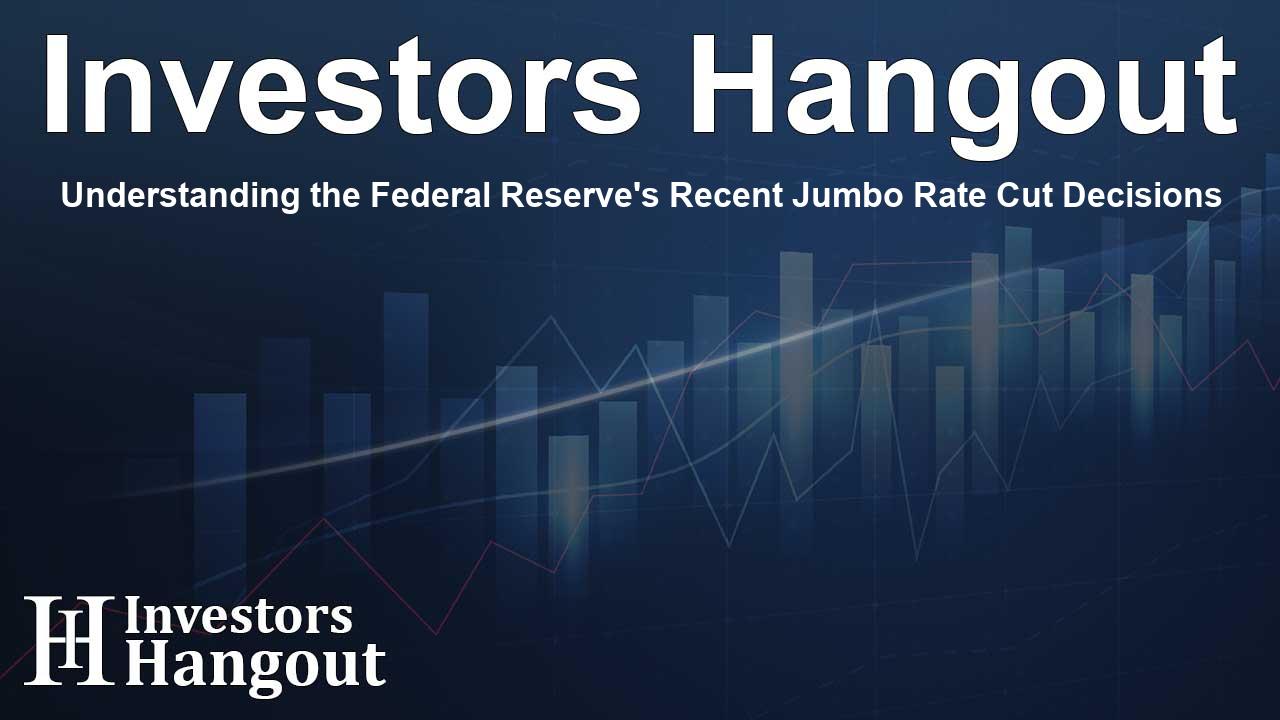Understanding the Federal Reserve's Recent Jumbo Rate Cut Decisions

Understanding Recent Actions by the Federal Reserve
Recently, the Federal Reserve has caught attention with its choice to begin a rate-cutting cycle, kicking off with a significant reduction. Economists are examining this noteworthy decision and considering its implications for the broader economic landscape.
Beginning of the Rate-Cutting Cycle
On a key Wednesday, the Federal Reserve opted to decrease its policy rate by 50 basis points, bringing it to a range of 4.75% to 5.00%. This important cut did not receive unanimous support, revealing differing views among committee members regarding how quickly and extensively rates should be adjusted in the future.
Capital Economics notes that recent forecasts suggest a more gradual approach ahead, with smaller cuts expected during the two remaining Federal Open Market Committee (FOMC) meetings this year. Interestingly, committee member Governor Michelle Bowman indicated a preference for a more modest reduction of only 25 basis points.
Future Rate Changes: A Careful Approach
Fed Chairman Jerome Powell aimed to temper expectations after the initial cut. He stressed that any further rate adjustments would heavily depend on incoming economic data, which suggests a flexible strategy where the pace could either speed up or slow down based on the economy's circumstances.
Powell stated, “I don’t think anyone should look at this and say this is the new pace,” which may leave some investors reconsidering the long-term implications of this decision. Not everyone on Wall Street believes that such a significant cut signals an ongoing series of aggressive reductions this year.
The Big Question: Is a 50bps Cut the Standard Now?
While some analysts maintain an optimistic perspective, predicting additional cuts totaling 125 basis points over time, others warn that the Federal Reserve may lean towards a steadier pace in the future. For example, analysts from Wells Fargo estimate that the federal funds rate could stabilize around 3.00% to 3.25% within the coming year.
There’s a general agreement among economists at Capital Economics and Citi about a lower terminal rate of around 3% to 3.25%. However, they also highlight the possibility of larger, front-loaded cuts still being viable.
Market Reactions: Evaluating the Immediate Impact
The immediate consequences of the Fed's bold decision were felt across the markets. The significant 50bps cut led to speculation about the overall health of the economy and the job market. After the announcement, risk assets showed notable volatility, reversing an upwards trend in stock prices and halting a seven-day winning streak.
Despite these concerns, Powell remained hopeful, asserting, “I don’t see anything in the economy right now that suggests that the likelihood of a downturn is elevated.” He referenced steady growth rates, decreasing inflation, and a strong labor market as signs that the economy stays resilient.
The Rationale Behind Front-Loaded Rate Cuts
Market professionals appreciated the Fed's decision to start the rate-cut cycle with such an assertive shift. The reasoning behind this strategy could be to address emerging challenges, such as rising unemployment, which could lead to a more serious recession. Evercore ISI noted that the Fed's intention is to reduce the risks of a severe economic downturn by implementing front-loaded rate cuts.
Conclusion: Considering the Future for the Federal Reserve
Looking forward, the direction of the Federal Reserve's monetary policy will be closely monitored. With a careful balance to strike, the Fed faces the task of navigating complex economic indicators and investor sentiment, all while ensuring its actions support a stable and sustainable economic environment.
Frequently Asked Questions
What led the Federal Reserve to lower interest rates?
The move was made to boost economic growth in response to various indicators that suggested a need for a more accommodating monetary policy.
What impact will these cuts have on the economy?
These rate reductions aim to lower borrowing costs, which can stimulate spending and investment, ultimately fostering economic growth.
Should we anticipate additional rate cuts soon?
While more cuts seem probable, their timing will be influenced by upcoming economic data and market trends.
What terminal rate are analysts forecasting?
Experts estimate a terminal rate of around 3.00% to 3.25%, but actual rates will depend on ongoing economic developments.
How are markets responding to these rate cuts?
Market reactions have been varied, displaying some volatility right after the rate decisions, which underscores investor uncertainty.
About The Author
Contact Evelyn Baker privately here. Or send an email with ATTN: Evelyn Baker as the subject to contact@investorshangout.com.
About Investors Hangout
Investors Hangout is a leading online stock forum for financial discussion and learning, offering a wide range of free tools and resources. It draws in traders of all levels, who exchange market knowledge, investigate trading tactics, and keep an eye on industry developments in real time. Featuring financial articles, stock message boards, quotes, charts, company profiles, and live news updates. Through cooperative learning and a wealth of informational resources, it helps users from novices creating their first portfolios to experts honing their techniques. Join Investors Hangout today: https://investorshangout.com/
The content of this article is based on factual, publicly available information and does not represent legal, financial, or investment advice. Investors Hangout does not offer financial advice, and the author is not a licensed financial advisor. Consult a qualified advisor before making any financial or investment decisions based on this article. This article should not be considered advice to purchase, sell, or hold any securities or other investments. If any of the material provided here is inaccurate, please contact us for corrections.
